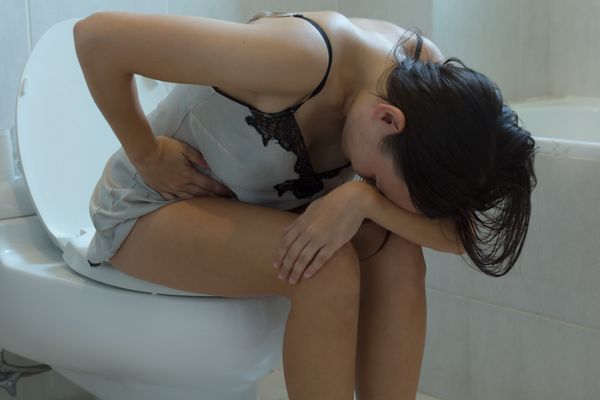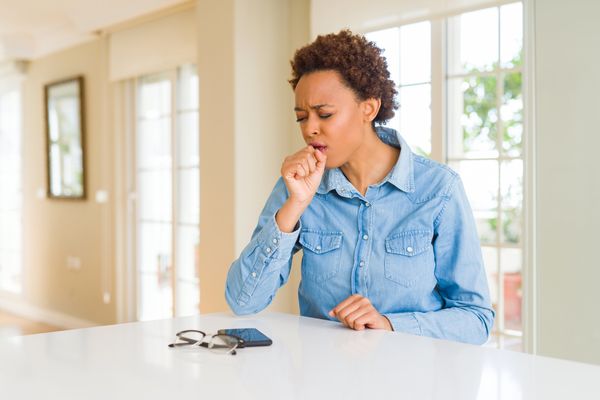By Sherrie Palm, for Women's Health Foundation
I wonder how many women take up an exercise regimen like jogging or marathon running and then give it up because urinary incontinence sends them to yikesville. I'd planned for some time to write about the impact urinary incontinence has on women who are runners and joggers, but when two women I know who are marathon runners told me within a short time that they had concerns about handling leakage issues during upcoming runs, I knew it was time to address these concerns.
We health advocates are a bunch of proactive, self-help go-getters who want to get every bit of zest out of life that we can. Fitness clubs are filled with women who want to feel great, so they can get the best bang for the buck out of their time on earth. We want to remain active, and we want to feel great while we do so.
Running is an extremely popular form of exercise, and running in any form makes people feel free—it's just you and the pavement and nature's elements. If you want to completely escape, you simply leave your cell phone at home. You are liberated from everything that overwhelms you in your daily routine. Running can make you feel healthy, vigorous and alive.
But there is an aspect of running that is of particular concern to women. Women runners who experience urinary incontinence often shy away from running when their incontinence reaches a level that they feel might be recognizable. It is important for these women to become familiar with the signs and symptoms of pelvic organ prolapse (POP), because urinary incontinence is the most common symptom of POP. The median age for women marathon runners is 35, a prime age for POP symptoms to start occurring.
A significant aspect of POP is the impact that marathon running and jogging have on the organs and structures within women's pelvic cavities. Many women are not aware of POP or the impact that running may have to their pelvic structures.
Because the organs in the pelvic cavity are jarred continuously in a downward motion over an extended time during marathon running or jogging, female runners are predisposing themselves to POP issues. Urinary leakage is the most common symptom of POP and can be a huge cause of distress for many women runners, but that is not the only reason women should support their internal structures.
There are five types of POP, and there is potential for more than cystocele (bladder) issues. The pelvic cavity muscle is like a trampoline that supports all the structures in the female pelvic cavity, and when it starts to weaken, everything above it is left without the proper support to maintain normal position. The result of that repetitive pounding is that organs shift downward and may start pushing into the vaginal canal. Women may start to experience urinary leakage, as well as other symptoms of POP such as a sensation of "their insides falling out"; rectal, vaginal, back or pelvic pain; abdominal bloating; constipation; and rectal or vaginal pressure.
Statistics for prevalence of urinary incontinence in women range from 40 percent to 75 percent, and 7 percent to 10 percent of women have severe urinary incontinence.
The question is how many female runners have POP and don't realize it? How many female runners initially tolerate minor urinary leakage and do nothing to address the cause? How many female runners find their incontinence issues have increased since they took up running? How many female runners eventually give up running because they cannot risk anyone discovering they have urinary incontinence?
The good news is that women with urinary incontinence have options to treat and eliminate the problem. Once a woman takes the necessary steps to find out the cause of her urinary incontinence, she can utilize support devices and treatments. Treatment options like a pessary can support the bladder and create immediate relief from incontinence. Some treatment options can improve the leakage that comes with a cystocele. There are nonsurgical options like learning the proper Kegel method or other alternatives to Kegels; utilizing core strengthening exercises like Pilates or Pfilates (pelvic floor Pilates); wearing support garments; and taking hormone replacement therapy for menopausal women to improve muscle tissue strength and integrity. If those fail, women can seek surgical repair.
Learn more about Easy Ways to Lessen Urine Leakage.
For women who run, whether it is a 26-mile marathon or a 1-mile jog, recognition of the impact running has on their core is vital. Women need to know about POP—ALL women. We need to know what we can do to address urinary incontinence. We need to know how to recapture control of this aspect of our bodies so we can continue to access the feeling of freedom that running brings.
Sherrie Palm is the founder, CEO and executive director of the Association for Pelvic Organ Prolapse Support, a nonprofit foundation for pelvic organ prolapse support. She is also author of Pelvic Organ Prolapse: The Silent Epidemic, and a key opinion leader on pelvic organ prolapse. As a women's pelvic floor health advocate, she devotes her time to establishing recognition of pelvic organ prolapse and providing support pathways for women in various stages of POP. For relaxation Sherrie enjoys spending time in the woods and meadows of northern Wisconsin, walking with her dogs and taking digital photos of nature. For more info about APOPS or Sherrie Palm, visit Pelvic Organ Support.







